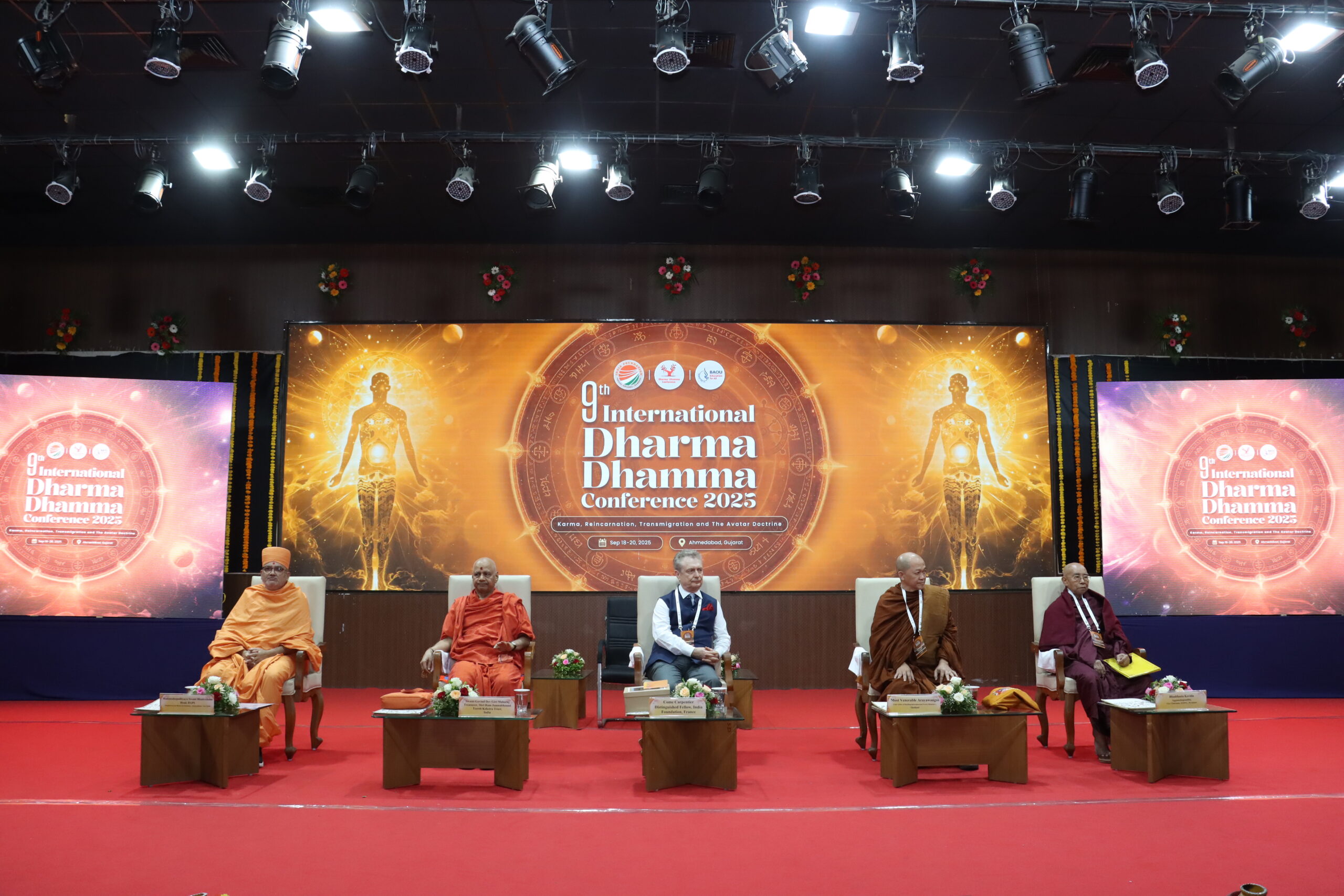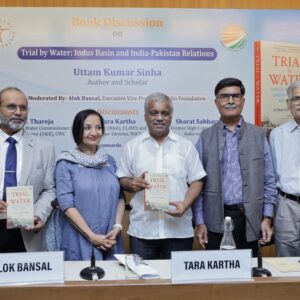The Covid-19 pandemic has brought renewed focus on a healthier way of living around the world, and India embraced it as an opportunity to showcase its heritage in natural and sustainable living. The pandemic has brought preventive medicine to the limelight throughout the world. After facing a virus that had no cure or vaccination for over a year, it is now well accepted that while allopathy rightfully dominates the curative health market, the preventive healthcare market needs to be developed at par with allopathy.
In India, our rich culture of traditional medicine, which had unfortunately gone dormant over the years, came to life once again as Indians went back to their roots to fight a health enemy that modern medicine did not have a cure for. This is not to say that AYUSH (Ayurveda, Yoga, Naturopathy, Unani, Siddha, Sowa-Rigpa and Homoeopathy) developed a cure for the Covid-19 virus but to reiterate that immunity building is a challenge that the AYUSH system of medicine championed long back. But the journey or the reincarnation of the AYUSH system in India did not start as a response to the pandemic. In 2014, with a vision of reviving the profound knowledge of our ancient systems of medicine and ensuring the optimal development and propagation of the AYUSH systems of healthcare, the Ministry of AYUSH was formed as a historic move in a world that was becoming increasingly globalised and unfortunately leaving behind its traditional knowledge.
Earlier, the Department of Indian System of Medicine and Homoeopathy (ISM&H) formed in 1995, was responsible for the development of these systems. It was then renamed as the Department of Ayurveda, Yoga, and Naturopathy, Unani, Siddha, and Homoeopathy 2003 with focused attention towards education and research but AYUSH medicine still lacked the attention it deserved without being under the aegis of a ministry.
As a testimony to the establishment, India’s Ayurvedic and herbal products export value increased from USD 354.68 Mn in the financial year 2015 to USD 446.13 Mn in the financial year 2019. This is to say that we were making steady progress even before the pandemic hit, but the year 2020 certainly gave the much-needed boost to the government’s efforts.
While nobody predicted back in 2014 that the world would face a crisis such as Covid-19, in hindsight, the formation of the ministry became a larger blessing for the country. As the pandemic hit, the Ministry of AYUSH shared guidelines for safe Ayurveda Panchakarma practice in the COVID-19 pandemic, the AYUSH products saw a 44 per cent increase in sales post the onset of Covid-19[1] and an AYUSH Covid-19 Helpline was launched by the ministry.[2] Just like that, AYUSH medicine started gaining its trust back with renewed momentum.
The market size of the AYUSH industry as a whole grew around 17 per cent between 2014 and 2020 with the increase in global and domestic demand, enabled by strong support to regulatory, research and development, and robust infrastructure by the Ministry of AYUSH.[3] In December of 2020, the Ministry of AYUSH and the Ministry of Commerce and Industry decided to work collectively for setting up AYUSH Export Promotion Council (AEPC) to stimulate AYUSH exports.[4]
The scope of AEPC, which will be housed in the AYUSH Ministry, includes expediting standardisation of harmonised system code for AYUSH, collaborating between AYUSH Ministry and the Bureau of Indian Standards in order to develop international standards for AYUSH products and services, identification of best practices and success stories and their promotion, ensuring quality and standards of AYUSH products and their price-competitiveness, and creating a brand for Indian AYUSH.[5]
The government is now aiming to position India as a destination for health and wellness tourism through the AYUSH System. It has developed the Champion Services Sector Scheme for Medical value Travel to enhance medical tourism in the field of AYUSH and to provide support establishing world-class state-of-the-art AYUSH hospitals. A National Medical and Wellness Tourism Board is also formed to boost medical, wellness, yoga, and Ayurveda tourism.[6] India is already a hub for medical tourism and thus, medical tourism is an excellent area for India to push AYUSH medicine backed by research and development.
As for creating the Indian brand is concerned, incentives are provided to AYUSH drug manufacturers for participating in international exhibitions and trade fairs and for market authorisation and registration of AYUSH products with bodies like USFDA, EMEA, UK-MHRA, NHPD, TGA, alongside other international regulatory agencies abroad for the purpose of export. So far, more than 50 products (Unani and Ayurveda) have been registered in eight countries namely Kenya, the USA, Russia, Latvia, Canada, Oman, Tajikistan, and Sri Lanka[7] Registration for products is an important milestone for manufacturers to enter into newer markets with registrations in bigger nations like the USA aiding trust development in other partner nations as well.
Under the Ministry of AYUSH, a Memorandum of Understanding (MoU) was also signed between the Pharmacopoeia Commission for Indian Medicine & Homoeopathy (PCIM&H) and the American Herbal Pharmacopoeia (AHP) in September 2021.[8] This MoU will lead to the constitution of a joint committee to develop the action plan along with timelines for the development of monographs and other activities for cooperation in the field of traditional medicine[9].
While this MOU will develop the confidence of the global community about the safety of AYUSH drugs, one of the major outcomes of this partnership will be that both PCIM&H and AHP would be working to identify various challenges faced by the herbal market of Ayurveda products or drugs in the USA. This will lead to the adoption of Ayurveda standards developed out of this cooperation by the manufacturers of herbal drugs in the USA as well.
Development of monographs of Ayurveda and other Indian traditional medicine products and herbal products, exchange of technical data for the development of monographs with due acknowledgment between the parties, training and capacity building, exchange of herbarium specimens and botanical reference samples, and phytochemical reference standards are also the part of MoU. There is an understanding for the development of a digital database and identifying further areas of co-operation for the promotion of quality standards of drugs/products used in Ayurveda and other Indian traditional medicine.[10] The National Medicinal Plants Board (NMPB) under the Ministry of AYUSH also launched a Voluntary Certification Scheme for Medicinal Plants Produce (VCSMPP) in order to encourage good agricultural practices and good field collection practices in medicinal plants. The VCSMPP will enhance the availability of certified quality medicinal plants as raw materials in the country and also boost their export and increase India’s share in the global export of herbs.
Ministry of AYUSH is presently implementing the Centrally Sponsored Scheme of the National AYUSH Mission (NAM). Under this scheme, subsidy at the rate of 30 per cent, 50 per cent, and 75 per cent of the cost of cultivation is provided for the cultivation of 140 prioritised medicinal plants on farmer’s land. Under the Medicinal Plants component of the NAM scheme, supporting market-driven cultivation of prioritised medicinal plants in identified clusters or zones within selected districts of states is being implemented in a mission mode throughout the country. As per the scheme guidelines, support is provided for the cultivation of prioritised medicinal plants on farmer’s land, nurseries with backward linkages for raising and supply of quality planting material are being established, and post-harvest management support with forwarding linkages, primary processing, and marketing infrastructure will also be created.[11]
While AYUSH healthcare as preventive medicine continues to be developed, it is important to understand that the traditional medicine industry is not limited to drugs given for prevention or treatment of ailment but extends to lifestyle and cosmetic products as well. While the AYUSH drugs industry is still at a nascent stage, it is the lifestyle products and cosmetics industries that have been growing well for over a decade now with many firms from India emerging as market leaders as well.
While India did have big names like Dabur and Himalaya making use of the country’s knowledge in traditional medicine in the lifestyle products segment, we lacked grassroots development of the AYUSH industry through small businesses becoming a part of the industry. Countries like China and South Korea have been able to proliferate their traditional medicine-based products throughout the world at a higher pace than India primarily because of the existence of several manufacturers and suppliers alongside the bigger firms.
With the world moving towards natural products, there is tremendous scope for the export of Indian traditional medicine knowledge and products. According to a 2018 report published by the Food and Agriculture Organisation of the United Nations, the Natural and Organic Beauty Market may reach USD 22 Bn by 2024.[12] According to research conducted by Kline Group, a global consulting services firm, about 50 per cent of the US consumers surveyed perceive natural over-the-counter (OTC) products to be safer than traditional OTCs. Safety drives substantial use of natural products in the paediatric population and 49 per cent of parents give natural OTCs to their children, with 72.3 per cent giving their children natural OTCs first before administering traditional (allopathic) OTCs.[13]
The proliferation of lifestyle products can act as a starting point for the promotion of AYUSH drugs abroad as lifestyle products are easier to deliver to consumers, riding on the wave of naturalisation of consumer products. We already have brands such as Forest Essentials and Kama Ayurveda gradually capturing the global market and led by the AYUSH ministry and the Startup India initiative, there are niche brands mushrooming in the AYUSH products industry as well. Recent names include Sadhev, a Kerala-based beauty brand, that is using family knowledge to create beauty and lifestyle products and the firm has already been covered by the likes of Elle and GQ magazines.
The growth of the AYUSH industry at a global scale will be done through the twin strategy of supporting lifestyle brands that are vocal about their use of AYUSH raw material in their products and at the same time the development of a robust research and development ecosystem for the AYUSH drugs to reach a wider audience, first in India and then abroad. Taking this spirit forward, the most recent Indian budget has announced that land up to five kilometres on either side of the River Ganga would be designated for natural farming giving a major boost to organic agriculture in the country.
Despite the pandemic, India’s organic food exports have grown by more than 50 per cent with food material now being exported to European countries like Germany and others. This sustainability push is not merely in food products but also in renewable energy. India’s installed solar power capacity crossed 48 GW in November 2021 and the country is one of the leading players in the world in renewable energy. The country has consistently beaten its own commitments under the Paris Agreement meeting them before time.
The argument in this essay is that this is a turning point in the history of sustainability in the country. There is both appreciation and demand for a better quality of living both at home and abroad and products and services, and rules, are being created to promote sustainability. More work is needed to push both domestic and global consumption and use of Made in India sustainable products and to ensure a ‘green switch’ of the Indian economy. This switch will make the Indian economy future-ready and ensure that the country’s health bill reduces significantly.
Author Brief Bio: Hindol Sengupta is Vice-President and Head of Research, and Karishma Sharma is a Researcher, at Invest India.
References:
[1] https://www.hindustantimes.com/cities/pune-news/ayush-products-see-44-rise-in-sale-post-covid-outbreak-vaidya-rajesh-kotecha-101612972985581.html
[2] https://www.ayush.gov.in/
[3] https://pib.gov.in/PressReleaseIframePage.aspx?PRID=1778864
[4] https://ayushnext.ayush.gov.in/detail/post/ayush-export-promotion-council-is-on-anvil-by-commerce-ayush-ministers-to-stimulate-sector-s-exports
[5] https://ayushnext.ayush.gov.in/detail/post/ayush-export-promotion-council-is-on-anvil-by-commerce-ayush-ministers-to-stimulate-sector-s-exports
[6] https://pib.gov.in/PressReleseDetail.aspx?PRID=1739452
[7] https://pib.gov.in/PressReleaseIframePage.aspx?PRID=1778864
[8] https://pib.gov.in/PressReleasePage.aspx?PRID=1754957
[9] https://medicaldialogues.in/ayush/ayurveda/news/ayush-ministry-inks-mou-with-us-group-to-enhance-export-potential-of-traditional-medicines-82140
[10] https://pib.gov.in/PressReleasePage.aspx?PRID=1754957
[11] https://pib.gov.in/PressReleaseIframePage.aspx?PRID=1704851
[12] https://static.investindia.gov.in/2021-08/GI%20Tagging%20in%20Ayurveda.pdf
[13] https://static.investindia.gov.in/2021-08/GI%20Tagging%20in%20Ayurveda.pdf




